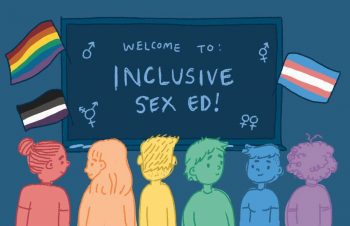Guest writer for Wake Up World
In sixth grade, I liked a girl in my gym class. We weren’t friends, but sometimes I worked up the courage to shyly say hello to her. I thought she was pretty, but that wasn’t exactly it. It was something else.
I had no words for my feelings so I ignored them, and then forgot about them.
If she’d been a boy, I would’ve known immediately: I had a crush. Girls liked boys, as far as I knew. The definition of a crush was that it was on a boy. That’s what my parents told me, what books told me, and what I observed my peers doing at school.
[pro_ad_display_adzone id=”110028″]
I also knew it from G-rated children’s movies. One study found that children’s movies portray love between men and women as magical, natural, and transformative.
Sixth-grade me felt nothing at all for boys. And sixth-grade me was trying very, very hard to like them because she wanted to fit in.
I’m a late bloomer, I told myself. Everyone else in my grade has hormones surging through their bodies making them interested in the opposite sex, whereas I don’t.
I felt left behind in childhood while my peers had graduated to become pre-teens.
As a sixth grader, I knew that same-sex attraction existed, but it seemed to me kind of like cancer: You know it happens to some people but you never think it could happen to you.
At some point, I saw an article about homosexuality in a teen magazine, and I realized it could happen to me. I adopted a wait and see approach.
I didn’t know about bisexuality, so I had no idea I could like both. I didn’t know that sexual orientation is a spectrum, so even if I was attracted to men a little (and I am), I might still like women more. The moment I first felt anything for a boy, I claimed my identity as a straight woman and didn’t look back for over two decades.
I was 36 years old before I figured out that my feelings for the girl in my gym class were a crush.
I’m not alone here. I’ve met other gay and bisexual women who told themselves that the feelings they had for girls were jealousy — they wanted to look like those girls, not be with them — or came up with other justifications to explain the gay away. Some married men and had children before realizing they were attracted to women.
If you’re straight, giving children age appropriate information about same-sex relationships, or the gender spectrum, may sound unnecessary. But when we educate kids, we must remember that some of them will grow up to be gay, bisexual, or transgender.
Just like straight children need to understand how their bodies are changing, or what their feelings mean, and how to safely navigate coming of age and sexuality, so do LGBTQ children.
And they deserve to see their own possibilities as magical, natural, and transformative, too.
Also by this author:
About the author:
OtherWords columnist is pursuing a Ph.D in sociology at the University of Wisconsin-Madison. She lives in San Diego.
This article distributed by OtherWords.org and licensed under a Creative Commons Attribution-No Derivative 3.0 License.
[pro_ad_display_adzone id=”110027″]








